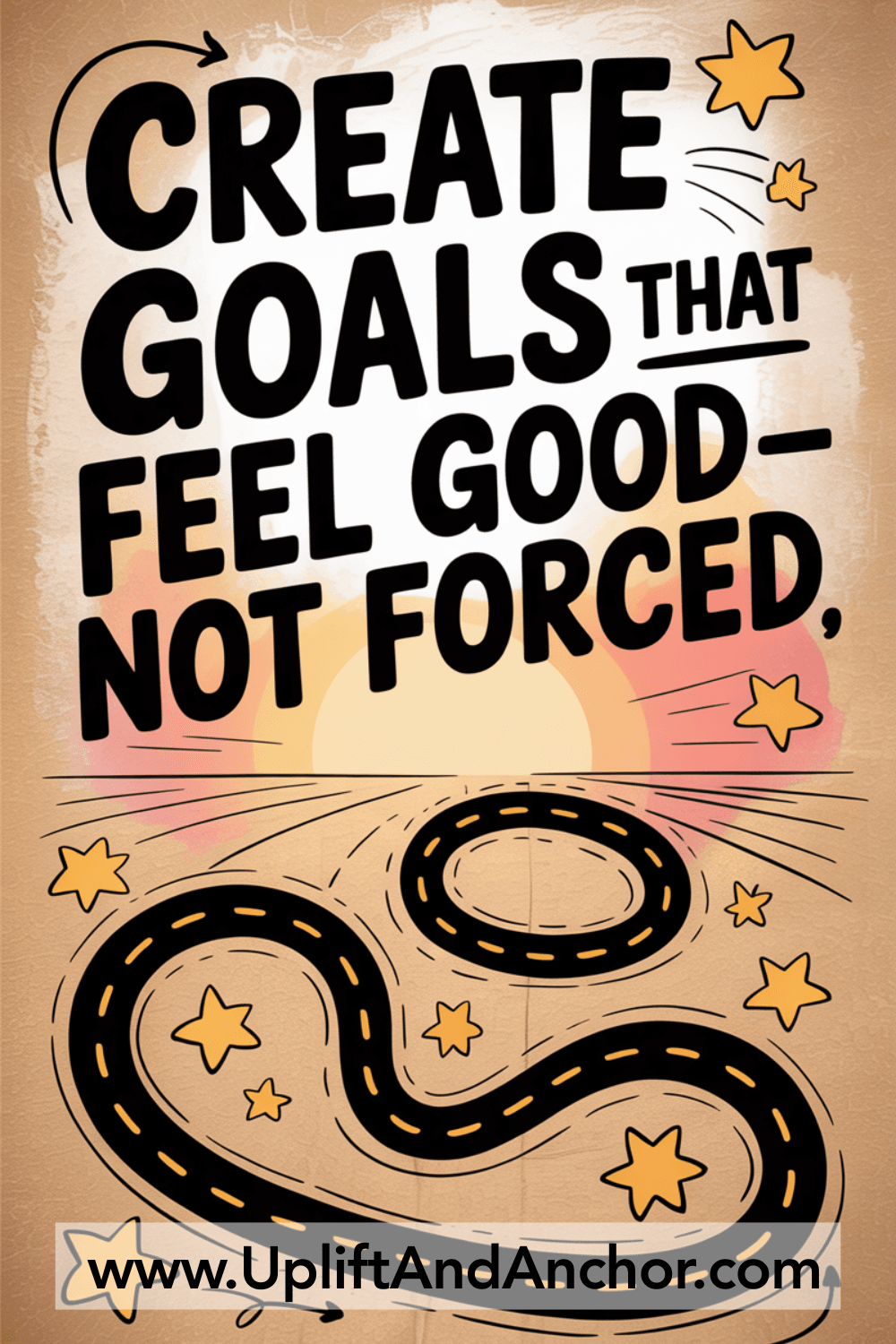We have all been there – started a new goal only to watch the excitement fade out fast. For me, I’ve promised myself more times than I can count that I’ll start working out more regularly and it always falls by the wayside. A lot of goals fizzle out when they may be too broad or forced, like “be more productive” or “get fit.” You want to have inspired goals – they fit who you are and tap into what matters most to you. In this post, you will learn how to set goals that keep you excited and that line up with your deep values. Let’s find out what moves you so you stick to your goals not just for a day or a week, but for the long haul!
What Makes a Goal Truly Inspiring?
An inspiring goal is one that lights a fire inside of you, feeds off of your values, lifts your spirits, and gives your actions direction. You will feel energy instead of dread when a goal is inspiring. If you notice that you start putting off tasks, or feeling heavy when you think about your goal — that’s a big red flag.
Ask yourself: Is this something I truly want, or something I think I should want
When you set your goals with your heart, you move forward with excitement, not fear or dread.
Step-by-Step Guide to Setting Inspiring Goals
Even when mental health makes daily life hard, choosing the right goals can spark hope and build self-worth. You want to find the correct direction for you and small moments of joy. Even when you experience tough days, knowing why you want something can help push you forward. Here are five ways to use goal-setting as a gentle invitation to believe in your next step:
1. Start With the Feeling, Not the Finish Line
Use feeling based prompts, such as “I want to feel ____ more often.” Whether it be hope, courage, or peace, name the emotions that you are craving. The feelings you are feeling are clues that can help turn abstract dreams into intentions you can actually work toward.
For example, maybe you want to start writing more, not to become a famous writer, but because it brings you joy and peace. When you set goals with your heart, you are more likely to stick with it, even if motivation drops. According to Charlie Health, attaching emotions to your progress can make your goals more nourishing and sustainable.
2. Reflect on What Matters Most
I want you to grab a notebook or even a Google Doc and list your three biggest values. These are the values that shape who you are. When connecting a goal to your core values, it starts to feel like a real part of you and not just another To-Do list item. Here are a few prompts to help uncover your true motivations:
- What energizes me, even a little bit?
- What drains me or makes me feel like it’s an obligation?
- What would I miss if I stopped doing it?
3. Make It Personal, Not Just Productive
Do not just make a goal because you think it’s what someone else wants you to do. You can ask yourself these three questions to help:
- Does this goal make me proud?
- Does this goal match what I care about?
- If no one ever saw this goal, would it still matter to me?
You will want to regularly ask yourself if the intentions you have are truly your own to make sure you’re staying on your path.
4. Dream Big, But Break It Down
I want you to dream big, but you have to break down the goals into small, doable steps or it will just be that – a dream.
A great way to break down your dreams is to try vision journaling or write a “future you” letter to imagine the possibilities that you are desiring. After doing one of these items, that will give you a clearer path to what you want and then you can reverse engineer those dreams into small, actionable steps.
5. Create a Visual or Emotional Anchor
A helpful way to truly embed your goals into your daily life is to establish a powerful visual or emotional anchor. This could be a single word that you write and hang up on your mirror, an image that represents your desired success, or a curated playlist that helps to evoke feelings of achievement.
When an inevitable tough day or your motivation drifts downward, turn to your emotional or visual anchor. This will help to remind you of your initial spark and dreams and reconnect you with the emotional drive behind your goals and commitment.
Uplift & Anchor Tip: It’s Okay To Adjust
The goals that you desire to achieve are not locked contracts – and if you feel the need to readjust a goal, that’s okay! Adjusting a goal doesn’t mean that you’re giving up – it means you’re growing! 🪴
Conclusion
One thing I hope you take away from this post is this: you don’t have to have every step planned or every piece in place. It’s okay to begin with where you are –with what feels true to you, not perfect. The goals you make don’t have to look impressive to anyone else, they just need to be aligned in your own heart.
Progress doesn’t come from pressure—it comes from presence. Choosing to take one small step today, in the direction that feels most meaningful to you, is more than enough. You are allowed to grow slowly, gently, and at your own pace.
As you set goals that inspire rather than exhaust, remind yourself: the path isn’t linear, and perfection isn’t required. Just keep coming back to what matters most to you.
“Don’t worry about being successful but work toward being significant and the success will naturally follow.” – Oprah Winfrey
You’ve got this—one anchored, uplifting step at a time. 🌱💛
✨ Ready to bring more clarity and calm to your week? ✨
My free Weekly Planner is designed to help you stay organized, track habits, and make room for self-care—all in one simple printable.
👉 Sign up below to grab your free planner today! 💙
💙 Was this post helpful? If so, I’d be so grateful if you pinned one of the images below!
Thank you for supporting this space! 🌼✨




